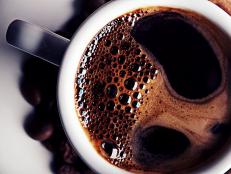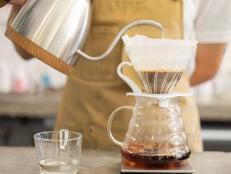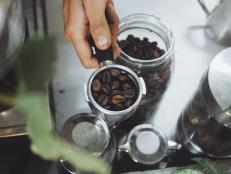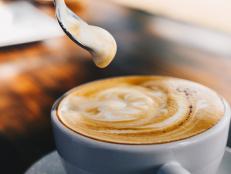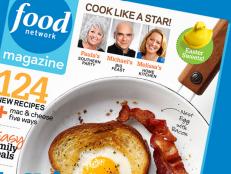Food Fight!: Caffeinated Drinks
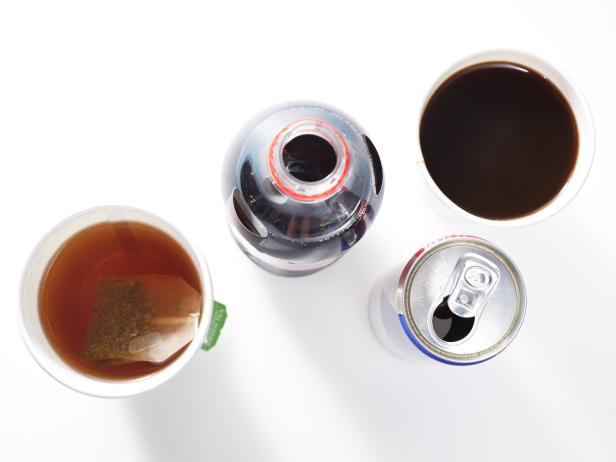
Stephen Johnson, 2014, Television Food Network, G.P. All Rights Reserved
Looking for that morning or afternoon buzz? Caffeinated creations -- including coffee, tea, soda and energy drinks -- vary not only in their pick-me-up powers but also in their nutritional benefits. Find out which ones offer the most (and least) perks.
Caffeine content: A typical cup of coffee (8 fluid ounces) contains 80 to 100 milligrams.
Perks and minuses: While black coffee contains an almost nonexistent amount of calories (about 5 per cup), too much cream and sugar will quickly change that. On the plus side, coffee is rich in flavonoids and other antioxidants that may benefit brain and heart health.
Caffeine content: Green, black, and white teas boast some caffeine, typically around 25 to 50 milligrams per cup.
Perks and minuses: Tea is also a potent source of antioxidants and has been associated in some studies with benefits such as heart health, cancer prevention and weight loss. Bottled teas are most often highly sweetened or dosed with artificial sweeteners, although popular brands such as Sweet Leaf and Honest Tea now offer some refreshingly unsweetened varieties.
Caffeine content: Most caffeine-containing sodas contain a fairly modest 30 to 50 milligrams per 12-fluid-ounce can.
Perks and minuses: These drinks also tip the scales at more than 10 teaspoons of sugar per serving. No antioxidants to speak of here, just empty calories.
Caffeine content: Caffeine content is the real wild card for energy drinks. You may find anywhere from 100 to more than 800 milligrams of caffeine per serving (size varies).
Perks and minuses: These fizzy concoctions are probably the worst dietary offenders, with plenty of sugar and other additives that are cause for concern. Many also contain an herbal substance known as guarana that can further increase the effects of caffeine, plus a wide array of vitamin and herbal supplements that have potentially harmful consequences.
Winners: Unsweetened (or modestly sweetened) coffee and tea are the victors among this buzzy bunch. Simple is best.
Dana Angelo White, MS, RD, ATC, is a registered dietitian, certified athletic trainer and owner of Dana White Nutrition, Inc., which specializes in culinary and sports nutrition.

























